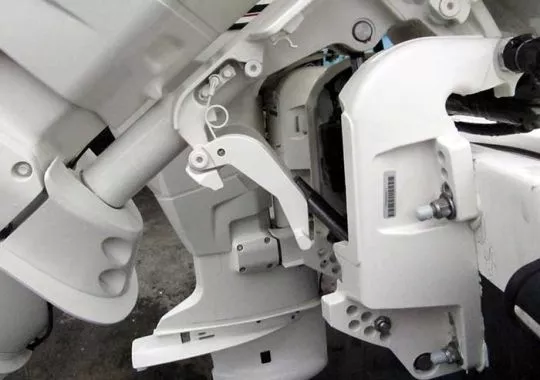Outboard motor stand: Why use it to protect your equipment?

What is an engine stand?
Outboard stands aren’t just for 2-wheelers or the seriously injured! Most outboard motors are equipped with a stand. This mechanical part ensures that the motor rests in the raised position. Its shape varies according to motor size and manufacturer. You’ll find either a kind of fork, or arms of varying length, resting on the top of the motor bracket or in specially positioned grooves. Once in position, the weight of the motor is transmitted to the boat mainly via the motor bracket. But why raise your motor and lock it in place?

Preserve engine performance and ensure mechanical locking
The first obvious reason for tilting the motor out of the water is to protect the propeller and baseplate from fouling. Cleaner, they’ll be all the more hydrodynamic, and sailing performance will benefit, with higher speed and lower fuel consumption. Water intakes remain clean and wear parts are protected from the marine environment, limiting the risk of premature ageing.

In the raised position, at anchor or alongside a quay, the motor may be shaken by the wakes of passing boats or waves. An additional mechanical block is essential to prevent the forces from being absorbed only on the upper tilting axes. While simple manual-lift motors require a stand to stay in place, motors with trim and lift cylinders may be tempted to simply press the lift button, without engaging the stand. The latter, however, takes the strain off the motor by preventing it from working in inappropriate axes, when it’s at the end of its stroke and not designed to do so. We therefore recommend that you place this stand in the upper, afloat position. An additional locking device is strongly recommended for road transport on a trailer.


Protecting cylinders
In addition to preventing fouling, the use of the stand also helps to protect other peripherals. For example, as we saw when testing Yamaha’s latest 300 hp model, once the engine is tilted, engine manufacturers plan to retract the trim cylinders to their lowest position. Protected from fouling, they will prevent premature corrosion and shell deposits during long periods of inactivity, which could limit their proper operation.


source:boatnews


.png)


